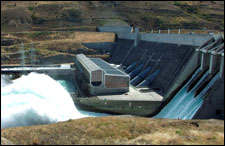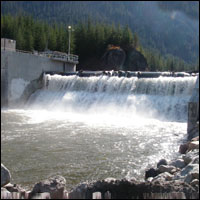 CEA while commenting on terms and condition of tariff 2014-19 Approach paper issued by CERC has stated that about 25,000 MW hydro projects have been concurred by CEA and are held up due to various reasons. According to CEA the main bottlenecks in taking up construction of hydropower projects are land acquisition; environment, forest and wildlife clearances; R&R issues and law and order and other local issues.
CEA while commenting on terms and condition of tariff 2014-19 Approach paper issued by CERC has stated that about 25,000 MW hydro projects have been concurred by CEA and are held up due to various reasons. According to CEA the main bottlenecks in taking up construction of hydropower projects are land acquisition; environment, forest and wildlife clearances; R&R issues and law and order and other local issues.
Commenting on the escalation in project cost and delay in implementation due to geological surprises, the petitioner should submit the extract of the cost estimate as given in the DPR while filing the tariff petition. In case, it is found that the completed cost of the project has escalated beyond the normal price rise and the reason for the same is poor project management, the commission will have the right to reduce the capital cost notwithstanding the actual capital expenditure shown in the audited books of accounts. With regards to low rate of return of hydro projects due to long gestation period, CEA suggested that equity deployed during construction should be treated as national loan by CERC.
Further, CEA stated that multi-pronged approach is suggested to expedite the implementation of hydro projects. It suggested constitution of high powered committee comprising senior officers from State government, environment ministry, power ministry, water ministry, CEA, Central Water Commission, Geological Survey of India, Road Transport & Highways ministry, and BRO. Besides, support of political leadership, support of state machinery and maintenance of law and order are required. It also mentioned expediting environment & forest and wildlife clearances and facilitating long term PPA and financial closure.
CEA further mentioned that apart from general multi pronged strategy, there is a need for State specific approach for each of the hydro rich Himalayan States which are Jammu & Kashmir, Himachal Pradesh, Uttarakhand Sikkim and Arunachal Pradesh. Elaborating this, CEA suggested that in J&K hydro power development could be spear headed by JKPDCL which is politically more acceptable than the NHPC to the local population. The formation of Chenab Valley Development Corporation, JV of JKPDC and NHPC for Pakhal Dual HEP is a good initiative.
CEA also stated that there are no specific issues in Sikkim and Himachal Pradesh. A number of projects in Lower Sikkim and Lower HP are under construction. The projects in Upper Chenab and Upper Satluj have already been allotted and there is a need to give them a push. Similarly, there is a need to give push to the project allotted in Upper Sikkim.
In Arunachal Pradesh, local agitation, NGOs resistance, anti dam activities and various subversive elements are trying to put up road blocks in hydro power projects. NHPC’s Lower Subansiri HEP, NEEPCO’s Upper Siang-II project are facing resistance from local population. Lower Siang and Dibang that are massive projects of size 2000-3000 mw are facing huge problems due to local activism and opposition. CEA mentioned that there is a need to create conducive environment in Arunachal Pradesh in addition to build basic infrastructure for making the project site accessible. In Uttarakhand, there is an urgent need to counter adverse publicity created by recent flood.











